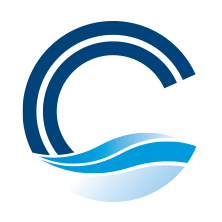Our Services
Labeling Techniques
Labeling and tagging hoses is a core competency for us at Carolina Components Group. We’ve gone to great lengths to offer customers multiple different options for labeling or tagging hose assemblies that we build here onsite. We offer our customers everything from electrical, chemical edge, all the way to a laser engraved label. Explore our offerings below to see which method is right for you.
Not sure which technique is best for your application?
Acid Etching
Shallow Etching results from a deposit of a contrasting surface mark approximately one ten-thousandth of an inch deep. Shallow etching is very fast – a mark is typically produced in less than a second. The impression is dark in color, the degree of which depends on a number of factors including the base metal.
Deep Etching uses a heavy duty power unit with DC current to remove metallic ions from the base material. When used with an appropriate stencil material, etching pad and the material-specific electrolyte, base material can be removed without molecular deformation into the part being etched. A heavy duty power unit can easily produce etches in the range of .001 – .003 inches, and often deeper if required.
Back to top
Clear Mark Labeling
CLEAR-Mark labels are durable and suitable for repeated autoclave and steam in place/clean in place (SIP/CIP) cycles. As label application is part of hose fabrication, quick turn-around time is never sacrificed.
Back to top
Laser Etching
Use etched collars to communicate your most critical information. Part numbers, sizes, service dates, and usage recommendations are just a few examples. Laser-etched collars present a sharp, legible, professional image. Include your company name, application-specific information such as serial numbers or maintenance codes, and more. Your information will not rub off, smear, or degrade.
Back to top
Tef mark Labeling
A Teflon encapsulated Mylar label containing 4 lines of customer specific copy at 20 characters maximum per line. Customers use this information to document such things as Part Number, Point of use location, Asset management, Date of manufacture and/or Expiration date. CCG can also color code as necessary. We offer TOTAL FLEXIBILITY.
Back to top
Labeling options

Bar Code
The Universal Product Code (UPC) is a barcode symbology that is widely used in the United States, Canada, Europe, Australia, New Zealand, and other countries for tracking trade items in stores. UPC (technically refers to UPC-A) consists of 12 numeric digits that are uniquely assigned to each trade item.

QR Code
A QR code (abbreviated from Quick Response code) is a type of matrix barcode (or two-dimensional barcode) first designed in 1994 for the automotive industry in Japan. A barcode is a machine-readable optical label that contains information about the item to which it is attached. In practice, QR codes often contain data for a locator, identifier, or tracker that points to a webtsite or application. A QR code uses four standardized encoding modes (numeric, alphanumeric, byte/binary, and kanji) to store data efficiently; extensions may also be used.
Back to top





